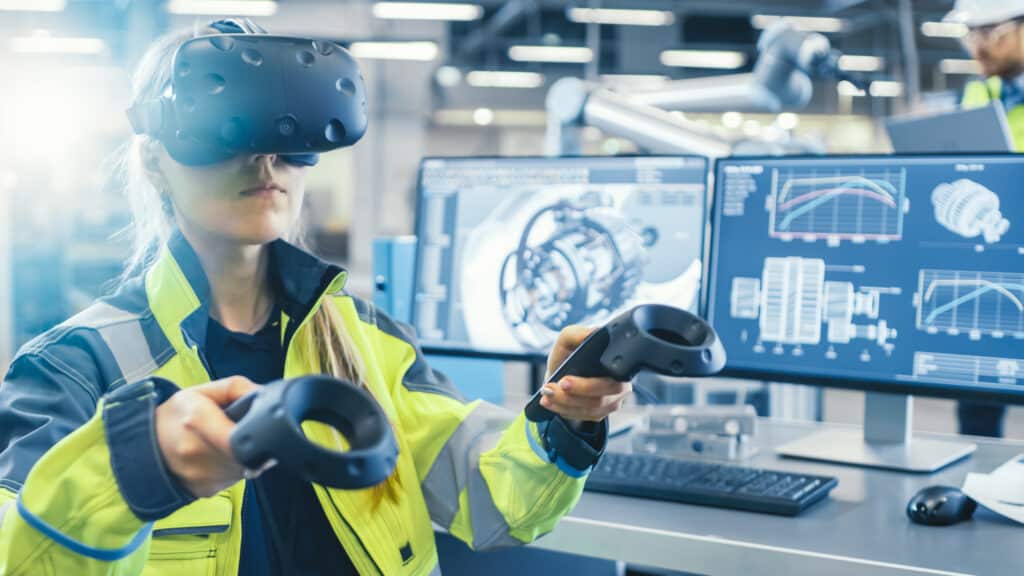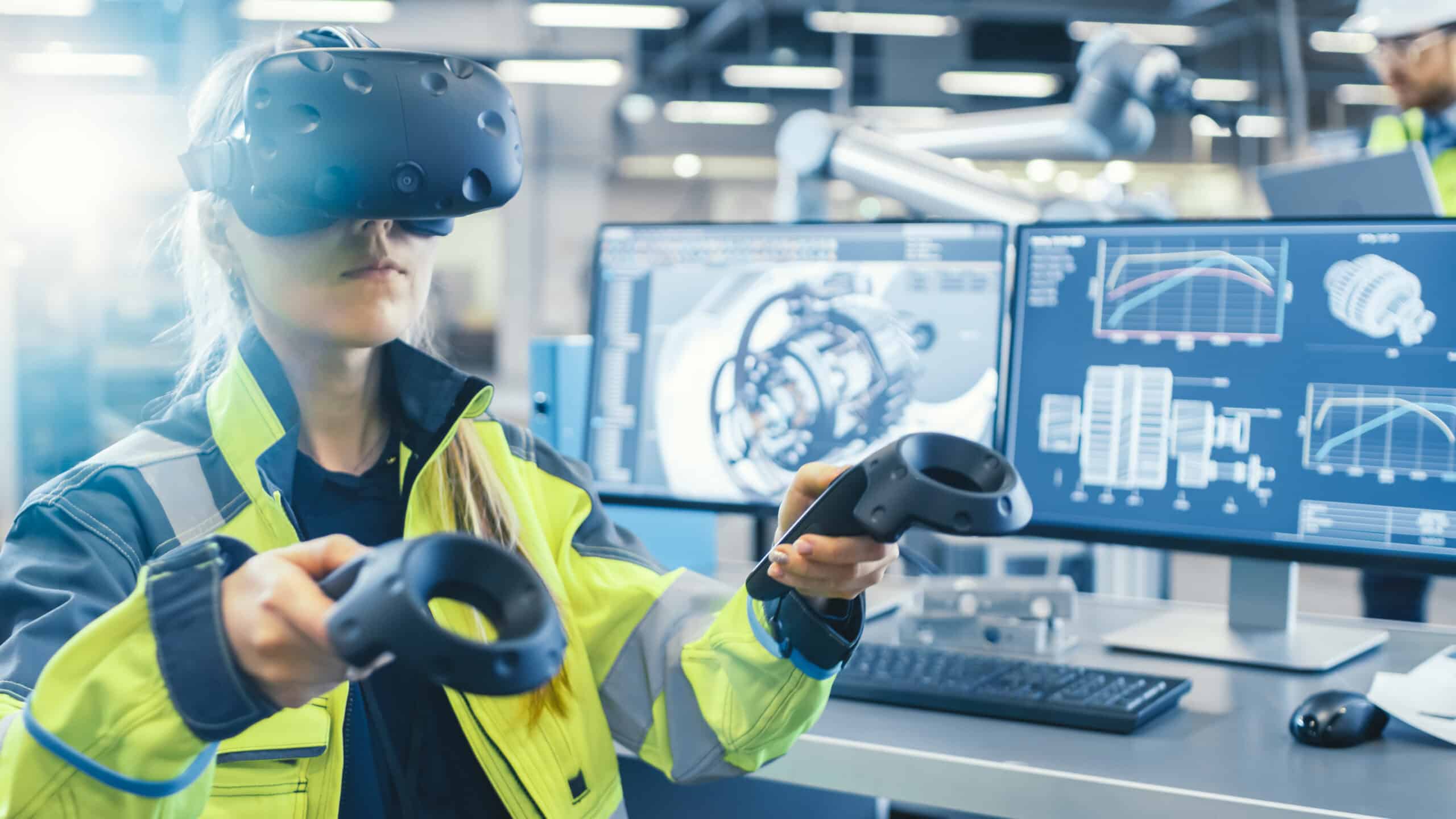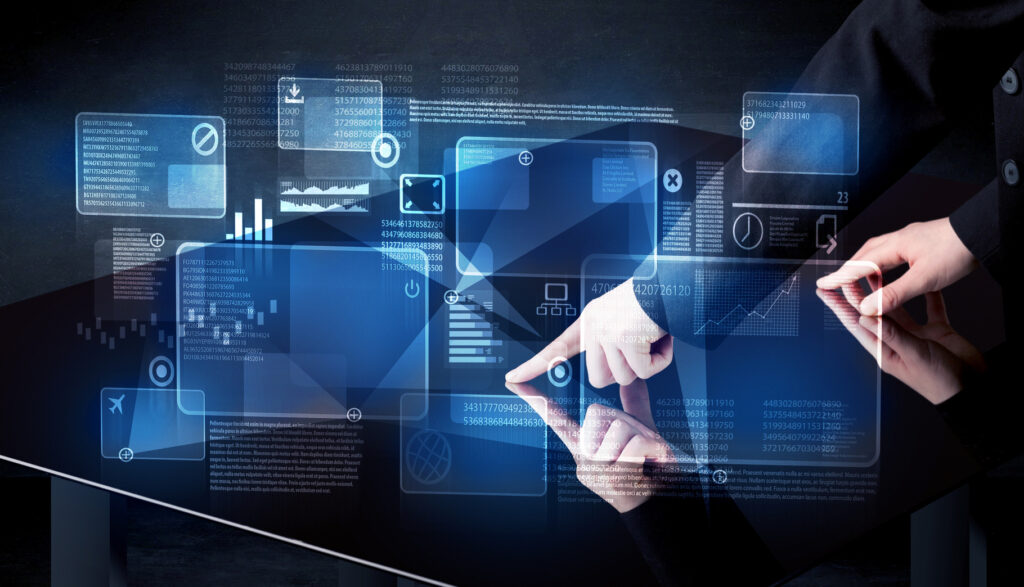Augmented reality and virtual reality – virtually everyone has heard of these terms nowadays, even if not everyone is sure of their exact meaning. This is mostly in connection with video games such as Pokémon Go, television and movies, or possibly in connection with architecture, sport, medicine, navigation, (flight and driving) simulation, learning, art, photography and entertainment in general.
But both augmented and virtual reality have also long since found their way into industry. There they are used in areas such as industrial applications, maintenance, medicine, learning and occupational safety.
But what exactly do these two terms mean?
Augmented reality is basically the computer-aided extension of the perception of reality, and can in the first instance involve all the human senses. Generally, however, augmented reality is only understood to mean the visual representation of information. This means supplementing images or videos with superimposed, computer-generated, digital additional information or virtual objects. Examples from the world of sport can be used to facilitate understanding: In a televised football game, for example, augmented reality allows the distance in the event of a free kick to be displayed using a circle or a line. In ski jumping and track-and-field athletics, the distances that need to be exceeded can similarly be displayed.
This augmented reality is a mixture of physical and virtual reality (VR). The latter is the representation and simultaneous perception of reality and its physical properties in a real-time computer-generated interactive virtual environment. In order to create this kind of reality, software specially developed for this purpose is required. The programmes concerned must be able to create three-dimensional worlds in real time. This is usually done separately for the viewer’s right and left eye and with at least 25 frames per second. The number may vary depending on the complexity of the application in question, and for viewing, a corresponding pair of glasses is usually required.
There is a need for optimisation
In the AR and VR areas, there are still some hurdles that need to be overcome and things that need to be optimised. There are still technical problems, for example, with tracking and image displaying delays. Another problem is power supply. At the moment, the available batteries are inadequate for powering mobile augmented reality systems for a long time. Data availability and complexity can also be a problem. Some data, for example when embedding the AR in the direct environment, isn’t always available.
But let us come back to the use of AR and VR in industry in its broadest sense.
Here, the two realities can be of decisive added value in many areas. For example, in industrial applications where, among other things, digital planning data can be efficiently compared with existing real shapes using AR. The technology also enables the widespread use of digital safeguarding methods when combining digital data with real prototypes or designs.
 Use in the process industry
Use in the process industry
What every football fan – as mentioned at the beginning – has long been familiar with, i.e. a faded-in goal distance for information or verification purposes, has long since established itself in the process industry. AR on a tablet PC makes it easier, for example, to locate and clearly identify plant components and to read device data otherwise displayed on often small or hard-to-reach device displays. Up-to-date calibration data, measuring-range and status information and alarms are also available everywhere. Today, much of this information can already be accessed with a smartphone – for example, at company meetings or – depending on distance and network technology – while on the road or at the manager’s home (read also: “Mobile HMI & Augmented Reality: see more, decide better”).
Data from all the areas of the automation pyramid is displayed to the user directly and easily on the mobile device via augmented reality. Secure identification by NFC, QR or the OCR of assets in the field can prevent serious errors. In this way, even staff without any dedicated knowledge of the system can understand the production process quickly and precisely without making any significant errors, with great potential for cost savings. In fact, it has been proven that the time required for maintenance work can be reduced by up to half.
Thanks to AR, the following solutions are possible in principle as a sensible supplement to remote operations:
- Recording and integration of operational and maintenance information distributed across the plant
- Presentation and logging of information for on-site work with AR technology and mobile devices
- Analysis of the documented records for improved maintenance-work management in the plant
AR can bring with it the following advantages for the plant:
- Improved maintenance efficiency and quality (reduced inspection times, maintenance costs and production losses)
- Reduced Mean Time to Repair (MTTR) by visually capturing the necessary information on site in real time
- Decision-making is accelerated by giving management the ability to view the necessary data in the preferred format at any time
Added value for safety and security
Augmented reality can also be used, for example, for the maintenance or planning of industrial plants, for navigation in buildings, outdoors, in cars or in airplanes, as well as for interactive analysis. Flight and driving simulators are further applications of augmented reality.
Augmented and virtual reality can also deliver significant added value, especially in the area of safety and security. Thus, objects with increasingly better hardware and software can also integrate people into augmented reality applications through face, speech or clothing recognition software. The virtual or extended representation of the immediate surroundings of an industrial plant, including the existing buildings, the transport network and other factors, can also be helpful in risk assessment and the minimisation thereof.
Overall, VR can simulate natural work systems. In a virtual working environment, employees learn how to handle plants, machines and work equipment in a realistic manner. The virtual working environment appears in its natural size, with technical processes running continuously and in real time. Movements in this environment can be controlled directly by machines or persons.
Simulate, analyse, optimise
Similarly, virtual reality can be used to simulate, analyse and optimise all phases of the product lifecycle. From design, through use, to disposal. With VR in occupational safety you can:
- check and improve the usability of products and processes during the development and construction phase. This prevents both errors and subsequent alterations.
- systematically and empirically investigate design solutions for human-system interaction and their influence on human behaviour. This reduces the number of machine modifications and costly field studies.
- test potentially hazardous products, processes and protection concepts without risk. This prevents actual risks during human-system interaction.
- determine cause-effect relationships after product-related accidents. This saves material, personnel, time and financial resources for on-site investigations.
Looking to the future
Outlook: With regard to the (process) industry, AR and VR hold immense potential. Wireless communication and augmented reality offer work facilitation and more security, but sometimes require rethinking in terms of workflow design. Even if the operational benefit is undisputed, the user must also be individually motivated to either use the new possibilities or adapt their usage behaviour. The greater the willingness to adapt, the faster the creation of added value.
Stronger fusion
In principle it can be assumed that in the future AR and VR will continue to be increasingly interwoven with actual reality. This circumstance can affect all the areas already mentioned and begins with the possible extension of PC operating system interfaces into the real environment. Programme windows and icons are displayed as virtual devices in the actual space and operated by glances or finger gestures. This circumstance could in principle lead to the replacement of conventional screens through direct fade-in in the environment.
In addition, augmented reality can be used for multimedia applications such as pseudo-holographic virtual screens and virtual surround cinema. The virtual beautification of our environment is another possibility – for example, by displaying virtual plants, buildings, views, works of art, decorations or lighting. The same could apply to virtual shop windows, posters or traffic signs. The fusion of virtual and augmented reality also seems possible. Users could then switch between the two on end devices.
Artificial Intelligence: Far more than Terminator, K.I.T.T. or R2-D2
Digital Transformation – more than just a technological change


 Use in the process industry
Use in the process industry

